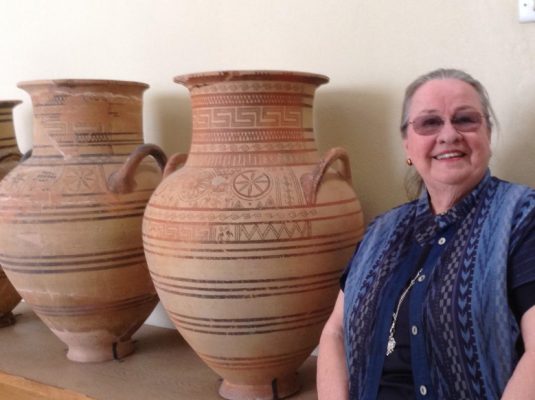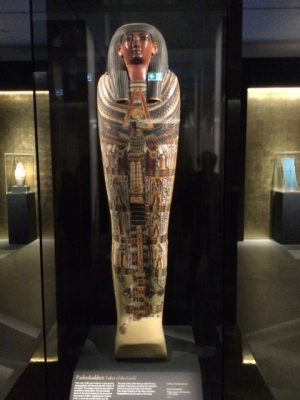By Jude Paul, Bulletin 2024/8, October

Which of the following statements are true:
- Lydia worked as a jazz singer in Queensland clubs.
- Lydia won the ‘Maid of Spring’ competition sponsored by Barters Department Store in Hurstville.
- Lydia speaks fluent Russian.
- Lydia compered fashion shows.
- Lydia featured in ads in the Women’s Weekly.
- Lydia’s family raised geese and poultry on their rooftop when she was a small child.
All of the above are true!
Some people might regard Lydia as a newcomer to Glebe. She moved here in 2002.
Lydia’s parents, both of Russian heritage, met and were married in the Russian Orthodox Church in Shanghai. By the time Lydia was born, her parents and elder brother had moved to Hong Kong where her father worked for the British Water Police. Lydia remembers living on the top floor of an apartment on Nathan Road with an amah, a houseboy and yes – rooftop geese and poultry. Happy years.
Lydia’s family – Mum, brother Walter and Lydia – were evacuated from Hong Kong by the Red Cross during WWII. Her father stayed to defend the island. He was captured by the Japanese and imprisoned at St Stephen’s College, part of the Stanley Prison Complex.
In 1947, after several years of medical treatment following his internment, Lydia’s father rejoined his family, then living in Brisbane. Lydia distinctly remembers finding him completely unrecognisable from the picture of him she kept by her bed, and still has to this day.
In Brisbane, Lydia’s family connected with other Russian-speaking families. Lydia remembers the pelmeni and piroshki assembly lines – the dough-maker, the dough-roller, the dough-cutter with the children at the end of the line filling and shaping the finished product. She also remembers her mother’s pals sitting around a table gossiping and singing together as they shared the sewing of a quilt for one or other member of the group. Singing was a favourite pastime for Lydia herself – singing lessons and hours of fun with her best friend Lillian accompanying her on the piano. Lydia was a member of the Brisbane Eisteddfod Choir; holiday jobs on the Gold Coast offered Lydia the opportunity to sing in local jazz clubs.
A Sydney man lured Lydia to Sydney in 1951 with a proposal of marriage – Sydney being Penshurst where his mother lived. And so did Lydia for the next 50 or so years. And Lydia, a very attractive woman, did win the ‘Maid of Spring’ competition at Barters store in Hurstville despite an objection from a fellow contestant that she could not possibly be a ‘maid’ when she was a married woman!
This win opened many opportunities for Lydia, including modelling, compering fashion shows and appearing in advertisements.
However, the most satisfying and long-lasting change in Lydia’s life arose from a neighbour’s suggestion that Lydia think about further education. Her children were in school, her days were free. Archaeology. Why not? The decision to enrol in Archaeology at Sydney University blossomed into a full-blown career in the conservation of antiquities. During her studies, Lydia worked as a volunteer conservator in the lab at the Nicholson Museum assembling shards recovered from European digs. This led to Lydia being invited to join a dig in Greece to locally conserve finds from the digs. This led to a full-time job in the Macleay Museum for the next 20 years.
At this time, there was no accredited course of study in this area. Lydia was a foundation member of The Museums Association of Australia (NSW Branch) working with Sydney University to create a field of study specialising in Museum Studies. Forget posing for ads in the Women’s Weekly with her new washing machine. Instead, Lydia joined four archaeological expeditions to Greece, was invited to lecture in Leningrad, secured the Macleay Museum as the venue for the 250th anniversary of Daniel Solander’s (a Swedish botanist) visit to Australia accompanying James Cook and played a very important role in securing a major collection of Irian Jaya tribal artefacts.

Lydia’s most interesting jobs? Painstakingly removing the shellac coating added in Victorian days as a preservative from one of the Nicholson Museum’s Egyptian sarcophagi. Her work revealed the obscured original colours, once again able to be seen in their true brilliance. Another was working in a Greek village, away from the Andros dig itself, surrounded by local women keenly eyeing her work assembling shards. Over time, these women welcomed Lydia into their lives.
Lydia was awarded an Honorary Master’s Degree from Sydney University in recognition of her diverse and valuable contribution to the museum community.
Many of Lydia’s colleagues and friends lived locally around Sydney University. As a new widow, downsizing to somewhere in Glebe seemed a pretty sensible option. She was already well familiar with the place itself and well-supported by dear friends and colleagues close by. It was a perfect decision.








Join the conversation on Facebook.